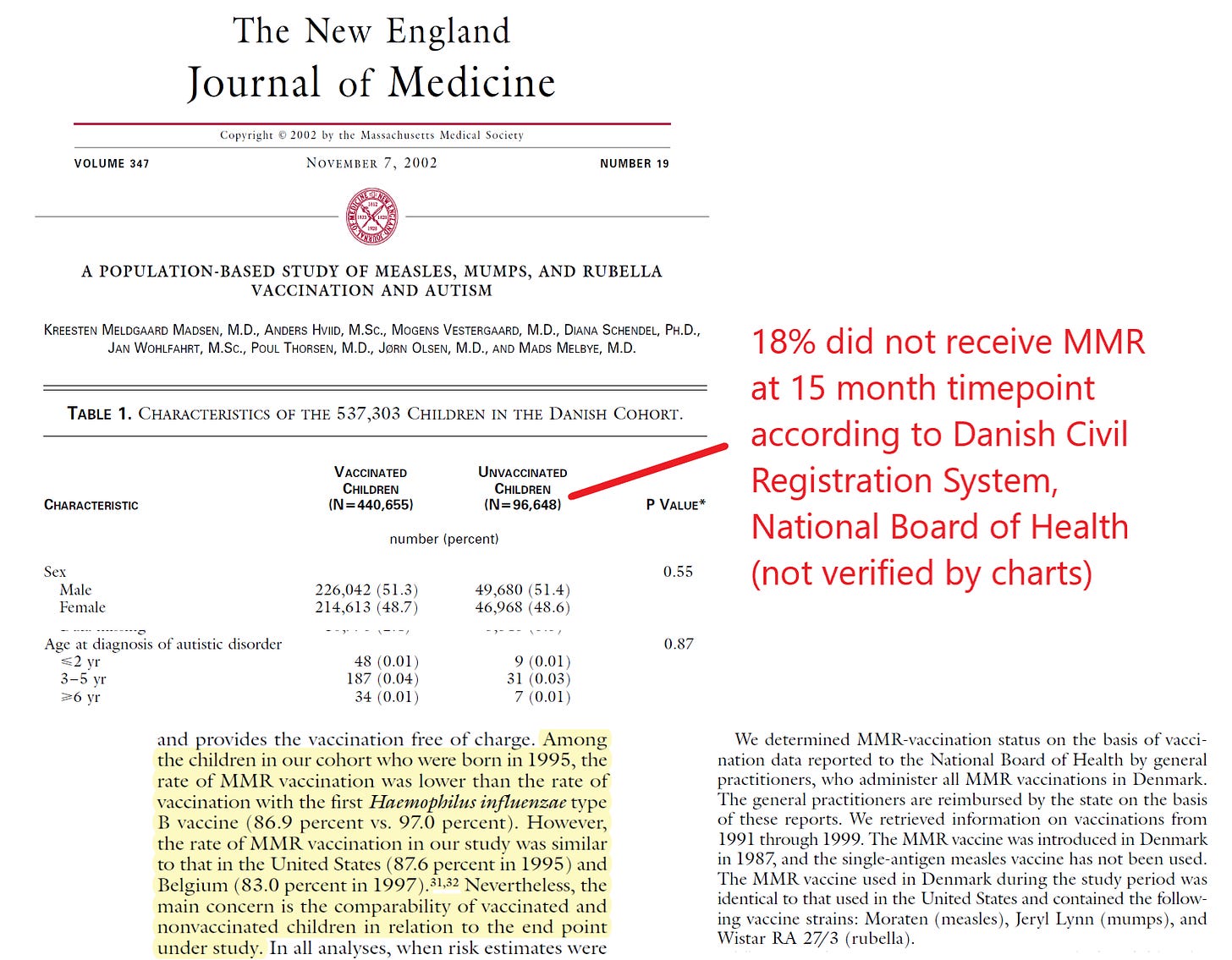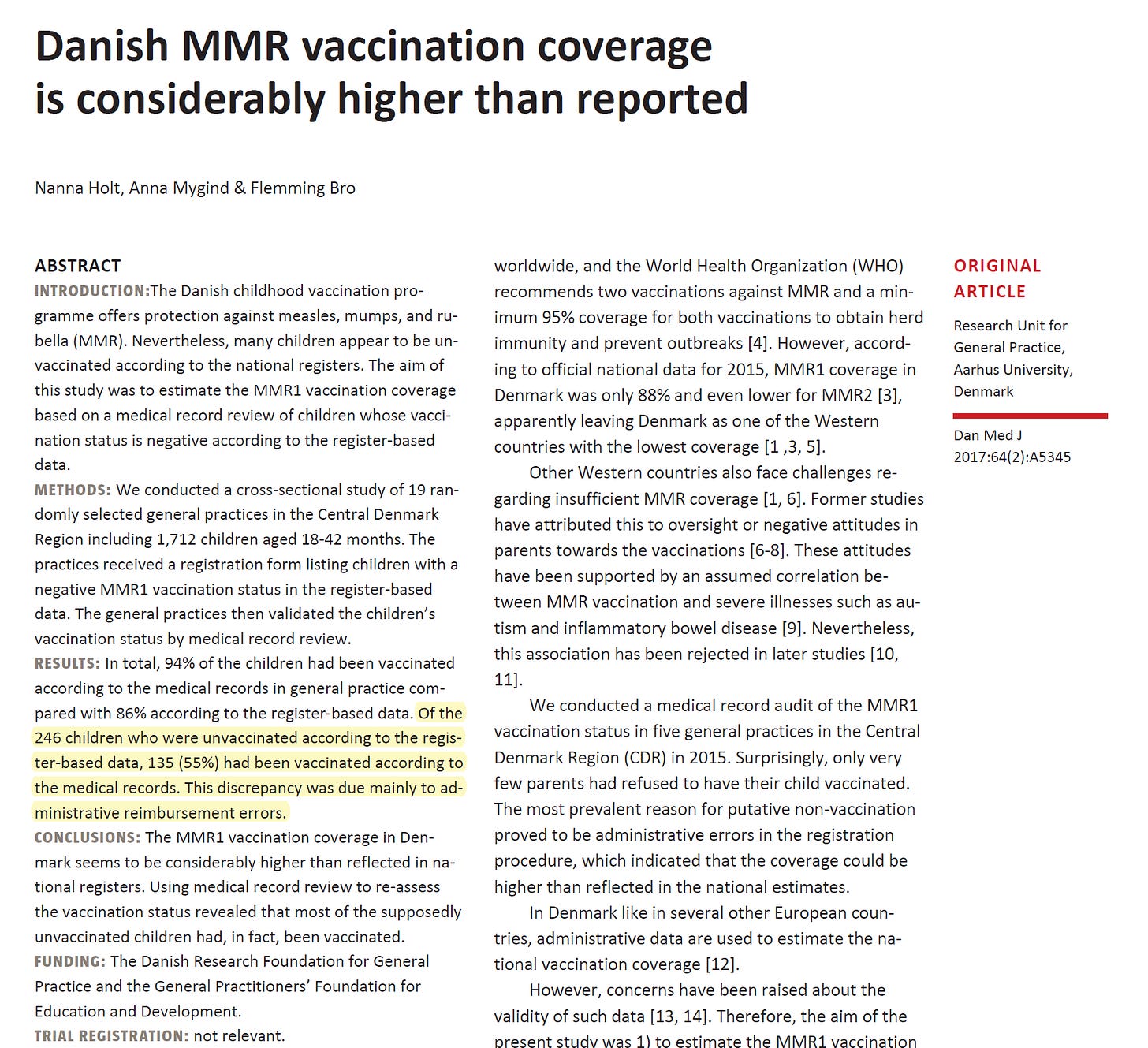Beware of Studies Concluding Autism is Not Associated with Childhood Vaccination
Study Design and Conduct Commit Type II Error: Failing to Find a True Association
By Peter A. McCullough, MD, MPH
As an epidemiologist, I can tell you it takes considerable training and scholarship to determine whether or not a study is valid and to determine if the conclusions are supported by the data. When it comes to childhood vaccines, the world is becoming skeptical of the vaccine industry since the CDC ACIP panel has added the EUA unsafe, ineffective mRNA COVID-19 vaccines for infants starting at 6 months of age.
With the ever expanding ACIP schedule of vaccine quantity and intensity of injections there has been a skyrocketing rate of autism. This has triggered scientists to go back and look at the studies published at the time to reassure parents that routine vaccines did not cause autism. Because so many shots are given at once, it is probably not any individual product that is the culprit, rather “hyper-vaccination” of a bundle of vaccine products that invokes a neurotropic, cytokine mediated inflammatory reaction that in some causes febrile seizures, autism, and immediate death. There are factors related to susceptibility including older parents and siblings with autism, but it remains that hyper-vaccination is a likely provocateur.
Madsen et al used Danish automated health data to evaluate the association of the MMR at age 15 months and autism. Only 40/422 had charts reviewed to verify the diagnosis of autism. Because it is an important diagnosis, all 422 cases should have been adjudicated by two blinded expert child psychiatrists. This study was unlikely to find an association from the outset since not all the vaccines where considered as a “bundle” and compared to children who went “natural” meaning completely unvaccinated with any product.

To make matters worse, the authors found 18% had missed the MMR at 15 months. That proportion seemed high to me so I checked another source. In 2015-2016 Holt et al performed a chart review and found that 55% of those MMR “unvaccinated” in the Danish system were indeed received the MMR documented in the medical record. Hence the Madsen analysis is invalid since both groups had largely received the MMR shot at age 15 months and there was no reporting of the true control group of interest—completely unvaccinated children.

In studies that are using unadjudicated, automated sources of data, misclassification often biases the results to the null hypothesis making a Type II error, that is, failing to find an association when indeed it is present.
Here is a summary of why Madsen does not rule out MMR or hyper-vaccination as a cause of autism:
non-randomized study with no true placebo group
all 442 cases of autism were not adjudicated by at least two independent child psychiatrists to confirm the diagnosis
Danish automated data due no capture all the MMR vaccinations; some (~55%) of the “unvaccinated” had received the MMR vaccine
MMR was not considered as part of the multi-injection bundle of hyper-vaccinated children compared to completely natural unvaccinated kids, which is the real control group of interest for autism
A similar paper using the same data sources, nearly identical study design, and equally flawed analysis was published similarly in Annals of Internal Medicine in 2019 (Hviid et al). In summary, we cannot rely on the Madsen or Hviid studies to rule out the MMR as a partial determinant of autism. Moreover, studies that make strong conclusions with such faulty data are suspect for investigator bias—meaning the authors intentionally wanted to rule out the association perhaps to advance the vaccine agenda, appease their institutions or research sponsors, or otherwise wished to be willfully blind to the possibility that childhood hyper-vaccination is a determinant of autism.
If you find “Courageous Discourse” enjoyable and useful to your endeavors, please subscribe as a paying or founder member to support our efforts in helping you engage in these discussions with family, friends, and your extended circles.




